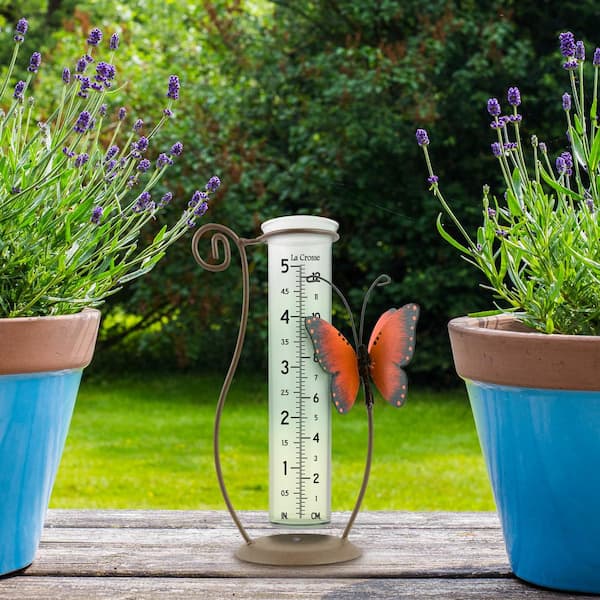Do It Yourself Rainfall Scale: Straightforward Steps to Make Your Own
Are you interested in tracking rainfall in your location? Producing your own DIY rain gauge is a basic and reliable means to gauge and record rainfall. With just a few typical materials and some fundamental steps, you can conveniently build your own rainfall scale in your home. In this overview, we will certainly offer you with a step-by-step process to aid you develop your very own rainfall scale. No need for any specialized expertise or equipment - this job can be completed by anybody. By following these straightforward directions, you will have a trustworthy tool to measure rains and add to your understanding of the local weather condition patterns. Allow's get started on making your DIY rainfall scale today!
Gather Products
To begin building your DIY rain scale, collect all the required materials using a detailed list of products. Having the appropriate products on hand will certainly ensure the successful creation of your rainfall gauge and enable for exact dimensions of rains. Collecting these products ahead of time will improve the construction procedure and ensure that you have whatever you need to produce your very own DIY rain gauge.
Prepare the Container

Mark the Dimension Increments
To accurately measure the amount of rainfall, accurately noting the measurement increments on your do it yourself rainfall scale is important. Without exact and clear markings, it would be tough to determine the exact quantity of rainfall accumulated in your rain scale. Here are the steps to note the measurement increments on your rainfall gauge.
First, select the device of dimension that you intend to utilize. One of the most common units for measuring rainfall are millimeters and inches. As soon as you have chosen the device, use an irreversible pen or water-proof paint to mark the increments on the side of your rain gauge. For inches, you can note every quarter here inch or every half inch, relying on your preference. For millimeters, you can mark every 10 millimeters or every 20 millimeters.
When marking the increments, it is essential to ensure that they are evenly spaced and clearly noticeable. Make use of a leader or measuring tape to make sure precision and consistency. In addition, see to it that the markings are resistant to fading or abrading, as direct exposure to the elements might cause them to deteriorate over time.
Place the Rainfall Scale Outdoors
The rain gauge need to be home positioned outdoors to properly accumulate rainfall data. The location picked for the rain scale should be complimentary and open from any kind of blockages that might potentially affect the dimension of rainfall. The Rain Gauge.
In addition, it is important to place the rain scale on a steady surface area, such as a degree ground or a durable blog post. This will prevent any kind of movement or tilting of the gauge, which could lead to inaccurate dimensions. It is likewise recommended to avoid positioning the scale near any kind of sources of synthetic water, such as lawn sprinklers or water drainage systems, as this can conflict with the accuracy of the dimensions.
Display and Record Rain Data
Normal tracking and recording of rains information is essential for accurate information analysis and interpretation. By tracking rainfall dimensions, you can gain important insights into weather patterns, climate fads, and water resource management. To efficiently check and record rainfall information, it is necessary to develop a regular and maintain consistent practices.
Firstly, guarantee that your rain scale is placed in an open area far from challenges such as trees or structures that might block rains. Additionally, see to it the rain scale is degree and securely secured to avoid any kind of movement that can influence the accuracy of the measurements.

When tape-recording the rains data, it is essential to keep in mind the date and time of each measurement. Utilize a ruler or a gauging stay with determine the rains depth in the rain scale, and document this info accurately.
To guarantee the accuracy of the dimensions, it is advised to empty the rainfall gauge after each recording. This will certainly avoid any overflow or dissipation from influencing succeeding measurements.
Final Thought
Finally, producing a DIY rainfall scale is a basic and functional method to keep track of and tape rains data (The Rain Gauge). By complying with the steps described in this short article, you can conveniently gather products, prepare the container, note the measurement increments, and put the rain scale outdoors. Regularly monitoring and videotaping rains information can provide useful information for numerous functions
Having the appropriate materials on hand will certainly make sure the effective development of your rainfall scale and enable for exact dimensions of rainfall.To accurately determine the amount of rains, precisely marking the dimension increments on your DIY rainfall gauge is necessary.The rain scale need to be put outdoors to properly gather rains information. The place chosen for the rain scale ought to be cost-free and open from any kind of blockages that could potentially affect the dimension of rains.In final thought, developing a DIY rain gauge is a useful and basic means to keep an eye on and videotape rainfall data.